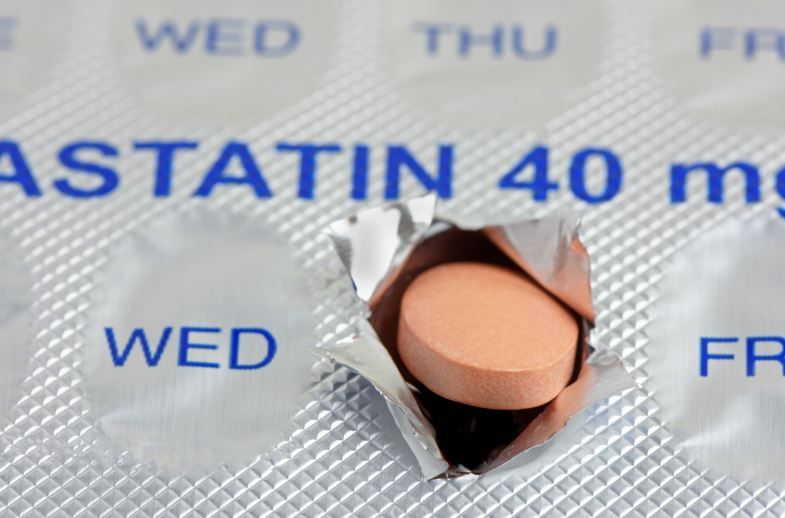- Clinical Technology
- Adult Immunization
- Hepatology
- Pediatric Immunization
- Screening
- Psychiatry
- Allergy
- Women's Health
- Cardiology
- Pediatrics
- Dermatology
- Endocrinology
- Pain Management
- Gastroenterology
- Infectious Disease
- Obesity Medicine
- Rheumatology
- Nephrology
- Neurology
- Pulmonology
Statin Protection Against Cirrhosis in Adults with NAFLD More Pronounced with Age
TLM 2023: Investigators found that the protective effects of statin therapy against late stage liver disease increased with age older than 51 years.
Statin therapy in adults with chronic liver disease may be more effective for reducing risk of cirrhosis in older individuals, an effect not influenced by sex, according to new findings.
Authors of a study that investigated the interplay between statin use and age and sex in preventing progression to cirrhosis over 10 years in individuals with nonalcoholic fatty liver disease (NAFLD) presented their results at The Liver Meeting, being held in Boston, MA, November 10-14, 2023.
©roger ashford/stock.adobe.com

Statin therapy is known to reduce the risk of hepatic fibrosis in persons with NAFLD, observed presenting author Georgia Sofia Karachaliou, Duke University Medical Center, and colleagues in the study abstract. But given that age, sex, and menopausal status all are known to modulate the pathogenesis of the disease as well as the risk of fibrosis, Karachaliou and team were curious to know whether the effect of statins on incidence of cirrhosis would also vary by age and sex.
The researchers developed a cohort of individuals with NALFD from Veterans Affairs electronic health records during a baseline period between 2007 and 2009. Variables identified at baseline were demographics, body mass index (BMI), statin use, comorbidities, relevant comedications (eg, beta-blockers, metformin), and Fibrosis-4 index (FIB-4) scores. The researchers followed the cohort for up to 10 years surveilling for incident cirrhosis as defined by ICD codes.
They also calculated cumulative dose and duration of statins, concomitant medications, and BMI during the follow-up period, and these were analyzed as time-dependent covariates. Study participants were censored when diagnosed with other chronic liver diseases, alcohol use disorder, when death unrelated to cirrhosis occurred, or when lost to follow-up.
Karachaliou et al used Cox proportional hazards regression models both with and without time-dependent covariates to explore the association of incident cirrhosis with statin use at study baseline and during follow-up, respectively.
Disparities in the association between statin use and incident cirrhosis were assessed in analyses of subgroups stratified by age (using a cut-off of 51 years, the average age at menopause in the US) and sex as well as in a model using an interaction term.
RESULTS
From the initial cohort of 346 818 participants with NAFLD identified at baseline, the investigators analyzed 335 991, a group with a median age of 62 years, 91% of whom were men, and 78% identified as White. Their median BMI was 31 kg/m², 39% had diabetes, and 65% were using statins at baseline. This analysis excluded individuals with prevalent cirrhosis, incident cirrhosis within 1 year of follow-up, and those with no follow-up data available after the index date, according to the abstract.
The researchers reported a cumulative incidence of cirrhosis over a median follow-up period of 117 months of 2.96%. This incidence, notably, varied by sex and age group (≤50 years or >50 years).
Once adjustments were made for potential confounding factors and baseline FIB-4 score, baseline statin use was associated with a reduced risk of developing cirrhosis, with a hazard ratio (HR) of 0.77 (95% CI, 0.65-0.91).
In models incorporating time-dependent covariates, both the cumulative standardized dose and the duration of statin use during follow-up exhibited significant protective effects against cirrhosis development, with HRs of 0.72 (95% CI, 0.68-0.76) and 0.67 (95% CI, 0.63-0.72), respectively.
The impact of cumulative standardized statin dose and duration demonstrated a significant interaction with age (P interaction =.005 and P interaction <.001, respectively), indicating a more pronounced protective effect against cirrhosis development in older participants compared to younger ones.
Source: Karachaliou GS, Perkins AM, Dorn C, et al. An age-statin interplay in preventing the development of cirrhosis in a 10-year cohort of patients with nonalcoholic fatty liver disease (NAFLD). Abstract presented at The Liver Meeting; November 10-14, 2023; Boston, MA https://www.aasld.org/the-liver-meeting/age-statin-interplay-preventing-development-cirrhosis-10-year-cohort-patients
